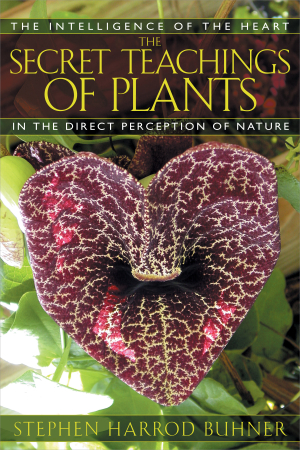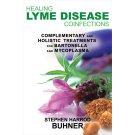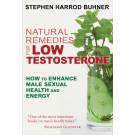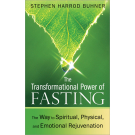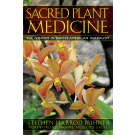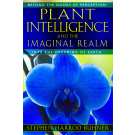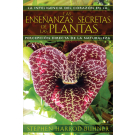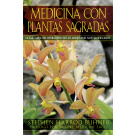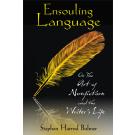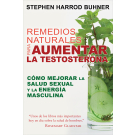The Secret Teachings of Plants
The Intelligence of the Heart in the Direct Perception of Nature
- Pages: 336
- Book Size: 6 x 9
- ISBN-13: 9781591430353
- Imprint: Bear & Company
- On Sale Date: October 27, 2004
- Format: Paperback Book
- Illustrations: 4 b&w illustrations
• Explores the techniques used by indigenous and Western peoples to learn directly from the plants themselves, including those of Henry David Thoreau, Goethe, and Masanobu Fukuoka, author of The One Straw Revolution
• Contains leading-edge information on the heart as an organ of perception
All ancient and indigenous peoples insisted their knowledge of plant medicines came from the plants themselves and not through trial-and-error experimentation. Less well known is that many Western peoples made this same assertion. There are, in fact, two modes of cognition available to all human beings--the brain-based linear and the heart-based holistic. The heart-centered mode of perception can be exceptionally accurate and detailed in its information gathering capacities if, as indigenous and ancient peoples asserted, the heart’s ability as an organ of perception is developed.
Author Stephen Harrod Buhner explores this second mode of perception in great detail through the work of numerous remarkable people, from Luther Burbank, who cultivated the majority of food plants we now take for granted, to the great German poet and scientist Goethe and his studies of the metamorphosis of plants. Buhner explores the commonalities among these individuals in their approach to learning from the plant world and outlines the specific steps involved. Readers will gain the tools necessary to gather information directly from the heart of Nature, to directly learn the medicinal uses of plants, to engage in diagnosis of disease, and to understand the soul-making process that such deep connection with the world engenders.
We in the West have been immersed in a particular mode of cognition the past hundred years, a mode defined by its linearity, it tendency to reductionism, and an insistence on the mechanical nature of Nature. This mode of cognition, the verbal/intellectual/ analytical (VIA), is now the dominant one in Western culture.
There is, however, another mode of cognition, one our species has used during the majority of its time on this planet--the holistic/ intuitive/ depth (HID) mode of cognition. Its expression can be seen in how ancient and indigenous peoples gathered their knowledge about the world in which they lived and how they gathered knowledge of the uses of plants as medicines.
All ancient and indigenous peoples said that they learned the uses of plants as medicines from the plants themselves. For, they insisted, the plants can speak to human beings if only human beings will listen and respond to them in the proper state of mind. Gathering of knowledge directly from the wildness of the world is called biognosis--meaning “knowledge from life”--and, because it is inherent in our very physical bodies, it is something that everyone has the capacity to develop. It is something, in fact, that all of us use (at least minimally) without awareness in our day-to-day lives. It is a way of being that is concerned with our interconnection to the web of life that surrounds us, with wholeness rather than parts, with the very human journey in which we are all engaged.
Prologue to Part Two
The woman who had come to see me was tentative at the door, hesitant. Her eyes were nervous, quick, lines of worry surrounding them. She eddied in the door like a wisp of smoke, whispered across the room, and hovered lightly in the chair. She was forty-five years old, short, thin and wiry. Her skin was pale, washed out, hair a brown, not-flowing shadow of life. Just there.
She had come because she could not breathe. She had asthma.
She began telling me her life in many languages. In words. In the small flutterings of her hands. In intonations, the rise and fall of her voice as she spoke. In the slight shifts of her body, in the tiny patterns of emotion that crossed her face.
Her asthma had come on suddenly with no prior history. It had been almost twenty years now. Her medications were many, expensive. Laden with side effects.
I responded to her gesturings of communication. Talked with part of my mind
hearing her speak of her life
while another part looked deeper, seeking the path the disease had taken in her. Searching for traces of its truth.
Her chest caught my attention, standing forth of its own accord. Beckoning.
My attention centered there and I breathed into it, letting my awareness move deeper, touching its shape. Feeling my way. I felt an overwhelming urge to cry. And then my chest began to feel tight. The muscles clenched, closed down. I began to hunch over slightly, curl around myself. My chest hollowed and I began to breathe high up, rapidly, in small quick bursts, my breathing a tiny bird, fluttering against the walls of my chest.
I began to feel afraid then, slightly hysterical.
I calmed myself, breathed more deeply. Sat back in my chair. Felt a wave of relaxation flow through my muscles. Slowly, one-by-one they unclenched.
I let myself care for her then. Sent out a wave of caring from me to her. Let it touch her chest, hold it in the hollow of caring hands. Waited. . . waited. . . waited. Breathing slowly, softly, calmly. Into her chest. . . .
I saw her sink more deeply into the chair, her muscles beginning to relax. Her skin tone was changing, the muscles and skin itself softening. Her face relaxed. And she took a deep breath. There was a slight wheezing sound. Then she took another, and deeper, breath. Her chest began to open up slightly, the muscles letting go. . . .
My attention focused on the lungs, my seeing alive to every part that had been revealed to me. I reached into her lungs with my caring then. Directed the living, feeling field of my heart to hold them, envelop them. My caring moved deeply within her lungs, interweaving with their tissues, holding them, all of us now suspended in a living moment of time. Then, still holding them, still present with them, I turned a part of my attention at a slight angle, sent it out into the world. Sent out a request for help, a prayer from my deepest being, my earnest need flowing out through this channel I had opened into the world. At the same time I kept a living channel open through me into the living reality of her lungs. . . .
I felt that living communication flowing from us going out, its field spreading wide, touching the living reality of the world. I felt the living intelligence there, deeply embedded in its own work, its own living. Then as it felt my touch upon it, and seeing that my appeal was genuine, it quickened, awakened, and turned toward me and saw. A living flow of energy came back through the channel I had opened between us. A deep caring and loving, coming from the wildness of the world. . . .
And into my mind flashed an image of skunk cabbage as I had seen it last. Standing powerful and green, luminescent in wetland forest. . . . You find skunk cabbage while walking deep in wetland bogs and shadowed forest. For it belongs to an ancient world, ancient long before humans walked or talked or breathed. You must wear boots when you go to find it, and dirty clothes. Skunk cabbage is not a plant for white shirts, not a plant for the fastidious.
we’re going to get dirty on this one
Introduction
Systole
Of Nature and the Heart
Prologue to Part One
Section One: Nature
1. The Nonlinearity of Nature
2. The Self-Organization of Life
3. The Energetics of Life
Section Two: The Heart
4. The Physical Heart: The Heart as an Organ of the Body
5. The Emotional Heart: The Heart as an Organ of Perception and Communication
6. The Spiritual Heart: Aisthesis
Diastole
Gathering Knowledge from the Heart of the World
Prologue to Part Two
Section One: Veriditas
7. The Door into Nature
8. The Necessity for Acuity of Perception
9. Feeling with the Heart
Section Two: The Taste of Wild Water
10. Gathering Knowledge from the Heart of the World
11. The Pregnant Point and the Mundus Imaginalis
Section Three: The Fruitful Darkness
12. Depth Diagnosis and the Healing of Human Disease
Interlude
13. The Importance of Rigorous Self-Examination and the Necessity for Moral Development
Section Four: Grains of Sand from Another Shore
14. Reading the Text of the World: The Geography of Meaning and the Making of the Soul
Epilogue
Appendix: Exercises for Refining the Heart as an Organ of Perception
Bibliography with Commentary: The Wisdom of the Earth Poets
Notes
Index
Brooke Medicine Eagle, author of Buffalo Woman Comes Singing
". . . Stephen Harrod Buhner reveals the use of direct perception in understanding nature, medicinal plants, and the healing of disease. . . . This book is a must read for any nature lover."
Share Guide, Mar-Apr, 2005
"Science and spirituality blend in an intriguing ecological assessment of what the plant world can teach us."
The Midwest Book Review, April, 2005
". . . how to achieve heart-based perception, and how to learn the medicinal uses of plants directly from the plants themselves."
The Burlington Free Press, Feb. 27, 2005
“I learned more from part one of this magnificent book than from any source in years. Buhner writes of complex discoveries in neuroscience and neurocardiology with clarity and coherence. Encompassing the highest spiritual insights of such giants as Blake, Goethe, and Whitman, part two is worthy poetry in itself, offering readers a unique way to move into transcendent realms. Of the truly great books appearing today, The Secret Teachings of Plants is easily the most rewarding I have had the privilege of reading.”
Joseph Chilton Pearce, author of The Biology of Transcendence
“In this wonderful book Stephen Buhner shows us that the heart is not a machine but the informed, intelligent core of our emotional, spiritual, and perceptual universe. Through the heart we can perceive the living spirit that diffuses through the green world that is our natural home. Required reading for all owners of a heart.”
Matthew Wood, herbalist and author of The Book of Herbal Wisdom
“Beautifully written, The Secret Teachings of Plants is a work of art--as much a poetical journey into the essence of plants as it is a guidebook on how to use plant medicine in our healing practices. Stephen Buhner is among the plant geniuses of our time. Like Thoreau and Goethe and Luther Burbank, the master gardeners and “green men” he so liberally quotes throughout, Buhner will be long remembered for his deep and introspective connection with the green world and for his ability to connect us to the heart of the plants through his teachings.”
Rosemary Gladstar, author of Rosemary Gladstar’s Family Herbal and founder of United Plant Savers
“A ‘must read’ for herbalists, healers, gardeners, nature lovers, and anyone who has ever been moved to tears by the everyday miracles of life.”
Susun S. Weed, author of Healing Wise
"The Secret Teachings of Plants offers ways to bypass the linear intelligence of the brain and tap into the nonlinear intelligence of the heart. . . . enables people to gather information directly from nature for diagnosing and treating illnesses, as well as for developing connections with the natural world."
Richard D. Wright, Tranquil Things, New Age Retailer, Holiday 2005
"If you work directly with plants, as a gardener or in herbal and alchemical practices, and want to cultivate a more intimate view of them or simply want to better enjoy your time spent outside and among growing and green things, The Secret Teachings of Plants will help you do both.
Mark Stavish, Institute for Hermetic Studies, April 2006
"This book is part poetry, part sicence . . . There is an energy that overcomes and refreshes."
Loretta, Widewest blog, Feb 2010
“Humanity’s ultimate liberation lies in the realization of the radiant transcendental consciousness in which nature inheres—that ultimate reality to which Buhner’s excellent books always seem to be pointing us.”
DharmaCafe, November 2011
"For homeopaths seeking to enhance their sensitivity to nature’s energies, and to complement their understanding of existing proving information, “Secret Teachings” is an enlightening guide."
Hpathy.com, May 2010
“Of the truly great books appearing today The Secret Teachings of Plants is easily the most rewarding I have had the privilege of reading.”
--Joseph Chilton Pearce, author of The Biology of Transcendence
“A ‘must read’ for herbalists, healers, gardeners, nature lovers, and anyone who has ever been moved to tears by the everyday miracles of life.”
--Susun S. Weed, author of Healing Wise
Mankind cannot survive without the nutritional and medicinal properties of plants. The number of plant species on Earth has been estimated at around 400,000, with many of these species remaining unknown to humans. While only a fraction have been identified and categorized by Western botanists, it is safe to say that many of the plants unknown in the West are known to indigenous people living within the plants’ natural ranges.
All ancient and indigenous peoples insist their knowledge of plant medicines comes from the plants themselves and not through trial-and-error experimentation. Less well known is that these plant teachings are at the basis of many of the modern discoveries in both medicine and in plant foods.
Throughout the world there is a tradition of direct perception of nature through the “intelligence of the heart.” Recent discoveries in neuroscience have proven that over 50 percent of the heart is comprised of neural cells. The heart is, in fact, a brain in its own right. Heart-centered perception can be exceptionally accurate and detailed in its information gathering capacities, as indigenous and ancient peoples assert.
Stephen Harrod Buhner explores this heart-centered mode of perception in great detail. He includes leading-edge information on the physical mechanisms of heart-based cognition and explores the work of numerous remarkable people who perceived the world with their hearts, including Henry David Thoreau; Luther Burbank, who cultivated the majority of food plants we now take for granted; George Washington Carver; Masanobu Fukuoka, author of The One Straw Revolution; and the great German poet and scientist Goethe, who studied the metamorphosis of plants. Buhner shows us how these great thinkers achieved a direct perception of nature using the cognitive abilities of the heart. He provides the knowledge and techniques necessary to develop heart-based perception, which is our birthright. He teaches us how to learn the medicinal uses of plants directly from the plants themselves and to understand the soul-making process that such deep connection with the world engenders.
STEPHEN HARROD BUHNER (1952–2022) was an Earth Poet and senior researcher for the Foundation for Gaian Studies. He lectured throughout the United States on herbal medicine, the sacredness of plants, and the intelligence of Nature. He is the author of nine works of nonfiction and one book of poetry, including the award-winning The Lost Language of Plants and Sacred Plant Medicine.



